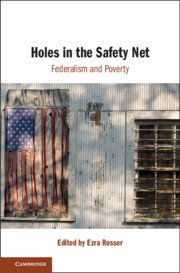New Article: Jamelia Morgan, Policing Marginality in Public Space, 81 Ohio St. L.J. 1045 (2021). Abstract below:
The pandemic spurred by COVID-19 has illuminated in stark detail the threats to safety and health that have long-characterized the lived experiences of unsheltered individuals. The pandemic has brought to the forefront deeply rooted structural problems, which contributed to the social conditions now currently rendering houseless people particularly vulnerable to the brutal disease and premature death. Skyrocketing housing prices coupled with city-wide housing shortages have converged in recent years to create a nation-wide affordable housing crisis. According to a 2018 report by the National Low Income Housing Coalition, to meet existing housing demand, about 7.2 million more affordable rental housing units would have to be built across the United States. Although the severity of the problem varies across jurisdictions, the same report indicates that “[n]o state, including the District of Columbia, has an adequate supply of rental housing for extremely low income households.” In Los Angeles, perhaps the “epicenter” of the affordable housing crisis,6 the number of unsheltered people has increased 12% in Los Angeles County and 16% in the city of Los Angeles—a 52% increase for the city since 2011.7 Approximately 75% of homeless people in Los Angeles are unsheltered and live outside.
The housing crisis seems to have also prompted local jurisdictions to ramp up quality-of-life policing efforts in public spaces. In this Essay, I suggest that the housing crisis in particular provides a case study from which to scrutinize some of the historical and ongoing harms that flow from managing access to public space using criminal laws—and why constitutional prohibitions against status crimes, one tool in the arsenal of challenges against quality-of-life policing, fail to protect against overcriminalization. The first part of the Essay provides a brief discussion of some of the past and present uses of criminal law enforcement to regulate the boundaries of, and behaviors within, public spaces with a focus on how those laws served to reinforce racial, gender, class and other status hierarchies. In particular, I discuss how the use of criminal laws to regulate access to, and behaviors in, public spaces reinforces both existing status hierarchies and contributes to ongoing criminalization of historically and currently marginalized groups. In the second half of the Essay, I discuss the recent Ninth Circuit case, Boise v. Martin, as an entry point into a discussion on the constitutional limits of criminalizing acts that occur in public because, in the words of Justice White in his concurrence in Powell v. Texas, the person accused has “no place else to go.” I suggest that constitutional protections against the criminalization of status do little to limit or constrain an oft-ignored but harmful purpose of criminal law as applied to the policing of public space: the public ordering function. The public ordering function of criminal law highlights its role in targeting not only houseless individuals, but an array of marginalized groups deemed “out of place,” disruptive, disorderly, or dangerous. Centering in on this function of criminal law permits a more practical view of the limits of existing constitutional protections and provides a framework to better account for the full scope of the harms stemming from ongoing quality-of-life policing efforts targeted at houseless individuals and other marginalized groups.





